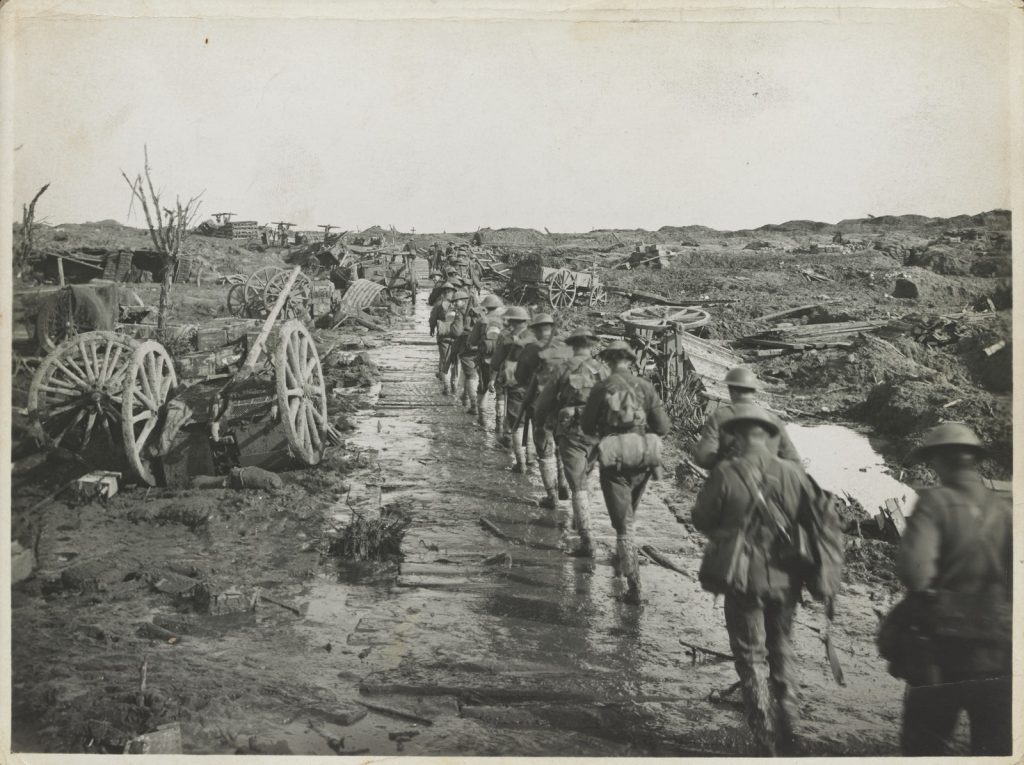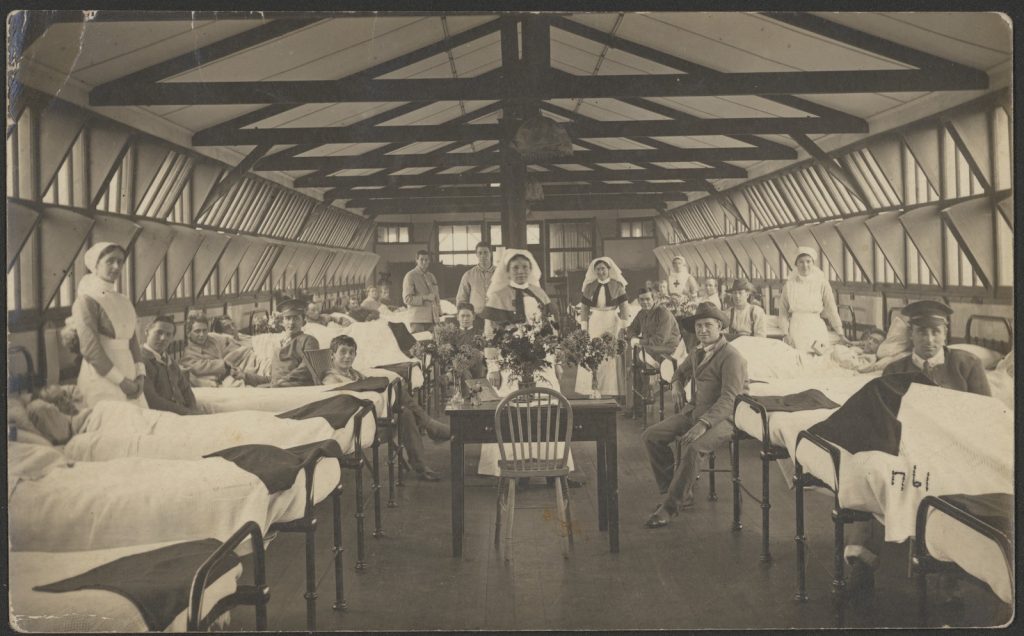Anzac Day is often a time when people think about the wartime experiences of their ancestors, and may contemplate researching them. This can sometimes be quite a daunting task, particularly if you don’t know where to look. So to help you navigate your way through the many amazing collections that are now available, we’ve compiled a list of key resources.
Start with a service record
We recommend you start your research by looking for a service record. These documents provide a wealth of information including the name of the individual, their address, occupation, next of kin and a physical description. They also include their date of enlistment, name of their unit or the ship, where they served, postings, changes in rank, injuries, illnesses and discharge date. This information is incredibly useful as it will prompt other avenues to explore.

The National Archives of Australia and the Australian War Memorial are the main repositories for Commonwealth official military records.
At the National Archives of Australia (NAA) you can find Army, Navy and Air Force service records from Federation (1901) onward. Their Defence and war service records website provides information on the range of records available in the archive..
Copies of Boer War dossiers, World War 1 service records, some World War 2 service records and Royal Australian Navy service cards (1911-1970) are available online on the NAA website. Go to their RecordSearch page and use either the Basic search – to search for a name, or the Name Search option – to search by name and conflict. If the record is not online you can order a copy from the NAA.
On the Australian War Memorial website you can find official records created by the Australian armed forces including online copies of honour rolls, embarkation rolls, nominal rolls, details of honours and awards, prisoner of war lists and missing person’s files. To look for an individual go to the Search a person page and enter the name of the person you’re researching.
Service records for the campaigns that occurred after WW2, including Korea, Malaya and Vietnam are held by the Department of Defence, but if the record is in the open access period you can order a copy from the National Archives of Australia.
Pre-1901 military records are usually held in the relevant state archive. You can find a list of archive offices here.

Unit war diaries and official histories
Once you’ve found your ancestor’s service record you should be able to identify the name of their military unit – either a battalion, squadron, regiment or ship. You can then research the history of their unit using official unit diaries and histories, personal stories, photographs, books and newspaper reports. This will help you to gain a better understanding of their actual war experience.
Unit war diaries are a valuable resource that recorded the daily activities of a particular unit. They include descriptions of battles, diary entries, maps and photographs. Digitised copies of selected original war diaries are held at the Australian War Memorial. On their Unit and Commander’s War Diaries page you will find diaries from WWI, WW2, and the Korean War and South East Asian conflicts. You can also access the official Reports of Proceedings, HMA Ships and Establishments, which covers WW2 to the 1970s.
Official histories were published after the war and provide a detailed account of the actions of specific units. State Library Victoria holds many official and regimental histories of World War I and World War II – simply search our catalogue using the name of the unit or battalion. Key resources include C. E. W. Bean’s Official history of Australia in the war of 1914–1918 ( online through the Australian War Memorial) and the official history series Australia in the war of 1939–1945 (online through the Australian War Memorial). A digitised collection of `out of copyright’ WWI unit histories can also be found on our website.

When they returned home
Once your ancestor returned home what happened to them? Where did they live, what sort of work did they do, what difficulties did they face? You should be able to find information on their lives by using repatriation and soldier settlement records, by researching newspapers, electoral rolls and other Victorian records.
Repatriation Files
The National Archives of Australia and Archives New Zealand have digitised a number of WWI repatriation records of those who survived both Gallipoli and the Western Front. These files are important documents that include information on the veteran’s physical and mental health, the type of treatment they received and their domestic and financial situation. They help to illustrate how difficult life often was once an individual returned home. To locate these records go to the NAA RecordSearch and search by a name and then add the word repatriation. If the file isn’t online you can order a copy from the NAA. WW2 files can also be ordered if you have proof that the veteran is deceased. Further information can be found here.
Soldier Settlement records
Between 1918 and 1934 over 11,000 returned servicemen and nurses received parcels of farming land through the Soldier Settlement scheme. Copies of these records and information on the impact of the Soldier Settlement Scheme can be found on the Public Record Office Victoria (PROV), World War I Soldier Settlement Scheme website.

Newspapers
Contemporary newspapers are particularly good for researching a person, a time and a place. They report on military news and provide details about an individual’s war experiences – everything from being farewelled by their community, to receiving medals, being injured, or returning home. They can also help you research their life once they returned to Australia.
The State Library collects every newspaper published in Victoria and many of these titles have been digitised and added to the Trove Historic Australian newspapers database. Trove also includes over 216 WWI-era Victorian community newspapers. Try searching for the name of your ancestor and limiting the results to a specific date range. Or you could try searching for their surname and home town, the name of their their unit or the place where they were posted.
We also subscribe to a large number of international historic newspapers databases include the Times Digital Archive, the British Library Newspapers and the Illustrated London News. These databases can be accessed from home by registered State Library members who are Victorian residents, Historic newspapers are excellent resources for finding global reports of war news or for researching individuals who were stationed overseas. One recent addition to our collection is the Service Newspapers of World War Two which contains 200 titles from England, US, NZ and Australia, specifically produced for military and civilian units serving at home and abroad.

The historical context
Another important research step is to investigate the historical context of the time your ancestors served. This will give you a greater understanding of what their military experience may have been like and will help you flesh out their life stories. Read historical accounts of specific wars or battles or look for material on the day to day life of a soldier, a nurse or a prisoner of war. You might also like to think about the families that were left behind and research what life was like on the home front.
The State Library has a rich collection of material relating to the wars and battles in which Australia has been involved. You will find books on campaign histories, biographies, official and unofficial lists of officers, registers of medals awarded, enlistment and casualty registers and war cemetery records and war atlases.
We have rare Australian and overseas war magazines, war atlases and maps and we subscribe to the First World War database which includes a huge selection of documents, images, maps and more relating to World War I narratives.
In our Manuscripts collection you will find many diaries, letters and photograph albums of people who served in the military during the two World Wars – these are particularly important as they provide first-hand accounts of their war experiences and reflections.
In our Pictures Collection you can find many photographs, albums posters and postcards of battlefields and service people. Thousands of these images have been digitised and can be accessed online through our catalogue.
You can search the library catalogue for the name of a specific publication or you can retrieve titles on a particular topic i.e. Australian Light Horse Regiment, or the Kokoda trail. You can also find a comprehensive list of resources by going to the subject headings World War, 1914-1918 and World War, 1939-1945.

Research guides
To help you get the most out of this incredible range of resources we recommend that you look at our online research guides –
Australians in World War 1 is a guide to finding records on Australian service personnel and their war activities. It includes information on service records, images, medals, regiments, battles official histories, casualties and nurses and women’s war work.
Australian colonial forces and family history is a guide to researching military personnel who served in the Australian colonial forces from 1788 to 1902. It covers Imperial Forces 1788-1870, New Zealand Wars 1860-1864, Sudan 1885, Boxer Rebellion 1900-1901 and the Boer War 1899-1902.
Researching your ancestors’ occupation – Defence forces this guide includes a section on researching military personnel who served in the Australian Defence Force from 1902 onward. It focuses primarily on the Australian Army, the Royal Australian Navy (RAN) and the Royal Australian Air Force (RAAF).
We hope you have great success in researching the wartime experiences of your ancestors.

Postcard written from son Tom to father Mr J O’Halloran, Castlemaine. H41584/1


Thank you so much – this is an invaluable resource in itself!!!
Amanda
(Researching: social history WWI, letters home from the front)
Thanks so much Amanda. I’m glad you found it useful. Cheers Ann
Thank you so much for collating this helpful resource Ann – very much appreciated !
Hi Noelle, thank you for your feedback. I hope it helps you with your research. Cheers Ann.
Thank you very much Ann. I have already completed my research on my husband’s great uncle who died on the first day of the landing at Gallipoli. Just recently, I came across a description of what happened on the day he died. It was in a letter in a regional newspaper written by a soldier who was with him when he died. I had not previously thought of checking for information using another soldier’s name. However, I think I’ll just go through all the sites you’ve listed in case I’ve missed even more. Thanks again. Jill
Priceless, Ann. Thanks for your hard work, eye for detail, and logical order of suggested record chasing.